Robot Industri - Panduan Utama
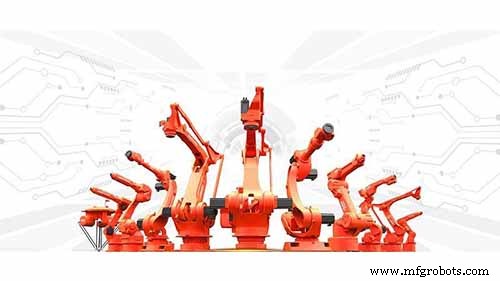
Robot industri mengacu pada jenis robot yang digunakan secara eksklusif sebagai robot manufaktur . Mereka otomatis dan dapat diprogram dengan kemampuan bergerak di sepanjang tiga sumbu atau lebih. Singkatnya, mereka memiliki lengan robot yang bisa berputar kemana-mana. Pekerjaan khas yang dilakukan robot industri . ini terlibat dalam termasuk pengelasan, pengecatan mesin lainnya, perakitan, pengemasan, dan pelabelan, di antara tugas-tugas lainnya.
Pada tahun 2020, ada sekitar 1,64 juta robot yang beroperasi di seluruh dunia di berbagai industri. Sejarah robot industri berasal dari tahun 1937 ketika bentuk robot pertama yang diketahui adalah perangkat mirip derek yang dirakit menggunakan suku cadang Mekah dan ditenagai oleh motor.
Diperkirakan pada tahun 2030, robot industri akan mengambil alih 20 juta pekerjaan dari manusia. Perusahaan manufaktur robot bekerja keras menghasilkan inovasi baru untuk mewujudkan impian ini.
Apa itu Robot Industri?
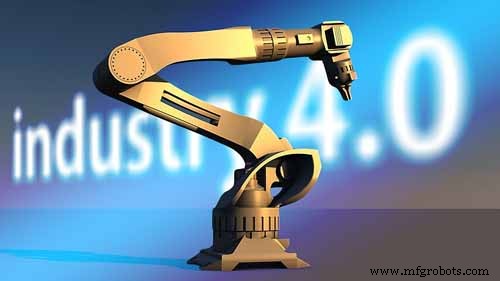
Sumber:Pixabay
Robot industri adalah perangkat mekanis yang dapat diprogram dengan lengan robot yang dapat digunakan sebagai pengganti manusia untuk melakukan tugas yang dapat dianggap terlalu berisiko atau terlalu berulang, tetapi dengan tingkat akurasi yang jauh lebih tinggi. Mereka adalah mesin yang dirancang dengan rumit dengan bagian yang bergerak, masing-masing dibuat untuk mengharumkan fungsi yang unik.
Meskipun biaya pembuatan robot industri telah tinggi, ada manfaat yang lebih besar ketika menggunakannya daripada manusia karena mereka menghilangkan kebutuhan untuk membayar gaji staf. Selain itu, mereka tidak lelah, yang berarti mereka dapat berlari selama berhari-hari di antara musim pemeliharaan sesekali.
Jenis Robot Industri
Seperti disebutkan sebelumnya, robot industri dirancang untuk peran tertentu. Robot yang diprogram untuk menangani pengelasan tidak dapat menangani pengecatan atau pengemasan. Variasi fungsi ini membantu memisahkan robot industri menjadi berbagai jenis. Sampai sekarang, robot industri dapat dibagi menjadi beberapa jenis utama yang meliputi berikut ini.
Robot Artikulasi
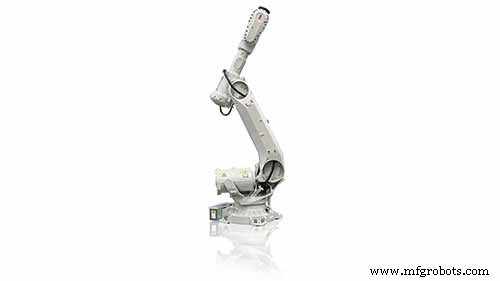
Sumber:Pinterest
Robot artikulasi adalah jenis robot industri yang paling umum. Mereka memiliki lengan robot pabrik dirancang dalam bentuk lengan manusia yang dihubungkan pada sambungan dengan sambungan puntir. Tautan di lengan dihubungkan bersama melalui sambungan putar yang biasanya berkisar dari dua hingga sepuluh.
Sendi memberikan kebebasan bergerak, memungkinkan lengan robot untuk berbelok ke segala arah tanpa patah. Singkatnya, lengan robot yang diartikulasikan memiliki enam sambungan yang menjadikannya yang paling fleksibel dari semua robot industri. Oleh karena itu alasan mengapa mereka yang paling banyak digunakan.
Pro
- Ini memiliki kecepatan tinggi sehingga ideal untuk pekerjaan industri yang membutuhkan kecepatan dengan tetap menjaga akurasi tinggi.
- Ini menempati jumlah ruang lantai yang terbatas.
- Menyelaraskan beberapa bidang jauh lebih mudah dibandingkan dengan jenis lainnya.
- Mereka sangat fleksibel, berkat banyak kapaknya yang memberi lengan kebebasan untuk bergerak ke segala arah.
- Lengan robot yang diartikulasikan dapat menangani banyak tugas di luar fungsi inti yang telah dirancang untuknya. Ini menjadikannya pilihan terbaik untuk merampingkan proses manufaktur.
Kontra
- Mereka tidak begitu sederhana dalam hal itu. Mereka membutuhkan pengontrol robot khusus.
- Pemrograman mereka sangat rumit dan, terkadang, hanya dapat dijalankan oleh seseorang yang berpengalaman dalam pengoperasiannya.
- Ada banyak kinematika canggih yang terlibat.
- Biaya robot industri terlalu tinggi, terutama pembuatannya.
Aplikasi Industri
- Ini adalah lengan las robot
- Aplikasi penempaan dan pengecoran
Robot Kartesius
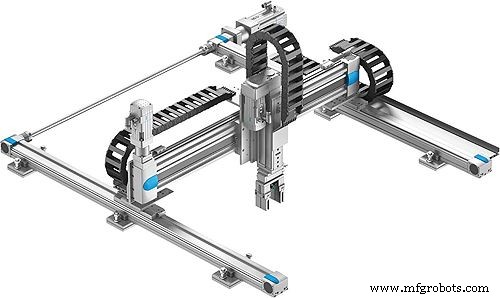
Sumber:Pinterest
Robot kartesian, juga disebut bujursangkar/robot gantry , adalah robot industri jenis yang dikonfigurasi persegi panjang. Mereka datang dengan tiga sambungan prismatik yang menghasilkan gerakan linier yang dipengaruhi ketika meluncur pada tiga sumbu tegak lurus. Di lain waktu mereka dilengkapi dengan pergelangan tangan untuk memungkinkan gerakan rotasi. Robot kartesian banyak digunakan oleh produsen otomasi industri , terutama karena kesederhanaan dan fleksibilitasnya, yang menjadikannya ideal untuk tugas-tugas unik.
Pro
- Ini menawarkan akurasi posisi yang tinggi.
- Kesederhanaannya membuatnya lebih mudah dioperasikan. Siapa pun yang memiliki pengetahuan dasar tentang cara kerjanya dapat mengaturnya.
- Ini jauh lebih mudah untuk diprogram.
- Ini sangat dapat disesuaikan, menjadikannya mesin yang ideal saat Anda ingin beralih ke tugas lain.
- Itu bisa menangani beban berat.
- Jauh lebih murah untuk memproduksinya.
Kontra
- Karena ukuran dan jangkauan pergerakannya, membutuhkan area operasional dan instalasi yang besar.
- Meskipun mudah dioperasikan, perakitannya terlalu rumit.
- Itu hanya bisa bergerak ke satu arah pada satu waktu.
Aplikasi Industri
- Bongkar muat barang berat.
- Pilih dan tempatkan operasi robot.
- Merakit dan sub-perakitan.
Robot SCARA
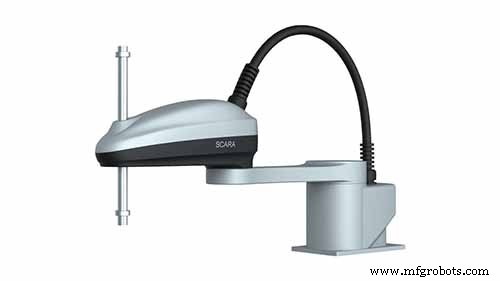
SCARA adalah singkatan dari Selective Compliance Assembly Robot Arm, dan merupakan robot industri dengan amplop kerja berbentuk seperti donat. Lengan robot SCARA memiliki dua sambungan paralel yang memberikan kepatuhan di satu tempat. Rotary shift-nya diposisikan secara vertikal dengan end effector ditempelkan pada lengan yang bergerak secara horizontal.
Robot SCARA mengkhususkan diri dalam gerakan lateral, dan untuk alasan ini, mereka sebagian besar digunakan sebagai robot perakitan . Dibandingkan dengan robot silindris dan kartesius, robot SCARA jauh lebih cepat dan memiliki integrasi yang lebih mudah.
Pro
- Mereka ideal untuk gerakan titik ke titik yang cepat dan berulang, sempurna untuk digunakan sebagai robot jalur perakitan mobil.
- Ini memiliki ruang kerja yang besar.
Kontra
- Robot SCARA membutuhkan pengontrol robot industri khusus.
- Itu hanya terbatas pada permukaan planar berkat desain dan bentuknya.
- Sangat sulit untuk memprogramnya secara offline.
Aplikasi Industri
- Penanganan wafer semikonduktor.
- Pengemasan dan pelabelan.
- Ini adalah lengan robot pembuat palet.
Robot Delta
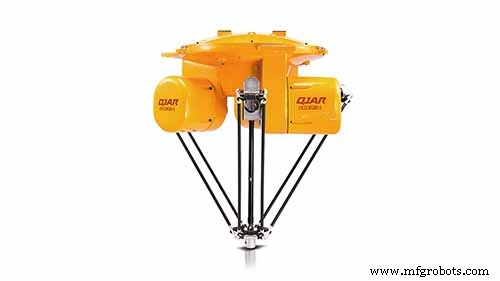
Robot delta terbuat dari hubungan sambungan paralel yang dihubungkan oleh basis yang sama. Juga disebut robot Parallel Link, mereka lebih mudah dikendalikan karena setiap sambungan diposisikan dalam kaitannya dengan efektor akhir. Ini memberi robot Delta kecepatan tinggi dalam gerakan, menjadikannya ideal untuk jenis pekerjaan yang melibatkan manufaktur volume tinggi.
Robot Delta memiliki amplop berbentuk kubah, desain yang mengurangi berat di dalam lengan, yang pada akhirnya menjadi alasan kecepatan tinggi. Mereka sebagian besar digunakan untuk otomatisasi pilih &tempat . Mereka diprogram untuk bekerja dalam sinkronisasi sempurna dengan mesin lain untuk memanfaatkan kecepatan; jika tidak, akan menjadi bencana jika sesuatu seperti bahan pengumpanan sabuk konveyor ke robot sedikit lebih lambat.
Pro
- Mereka adalah mesin berkecepatan tinggi. Robot Delta khas 30% lebih cepat daripada robot SCARA karena desainnya.
- Mereka memiliki akurasi operasional yang tinggi meskipun kecepatannya tinggi.
- Mereka memiliki output produktivitas yang tinggi. Mereka dapat memproses hingga 3 bagian per detik.
- Mereka adalah pilihan yang lebih aman untuk pekerjaan berulang dan berkecepatan tinggi, yang dapat berbahaya bagi manusia.
Kontra
- Mereka memiliki banyak bagian yang bergerak, yang terlalu rumit.
- Requires a dedicated robot controller.
Industrial Application
Polar Robots
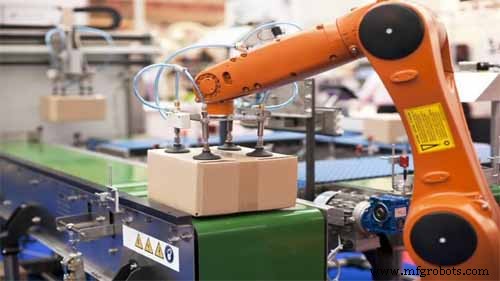
Source:blog.technavio.com
Polar robots are made of a twisting joint that connects the arm with the base and two rotary joints plus a single linear joint. Due to their spherical work envelope, Polar robots are also called Spherical robots. Another unique design feature in these robots is their centrally pivoting shaft and an extendable, rotating robotic arm . It also has a gun turret configuration that covers a very large volume of space when operational.
Pros
- They have an extensive reach, with the ability to swing 360 degrees.
- They can also be able to reach for objects directly above and below them.
- They can handle a large volume of work.
- They require very little floor space.
Cons
- Although it can reach for objects above it, the vertical reach is limited, and it can not do it by itself without a controller.
- It has very low accuracy and does not do so well when it comes to repetitive tasks.
- It requires a very sophisticated control system.
- It is slowly being phased out.
Industrial Application
Cylindrical Robots
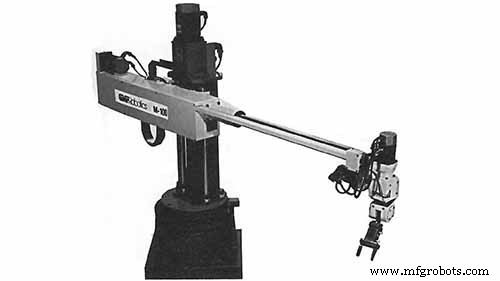
Source:industrial-electronics.com
Cylindrical robots possess a single rotary joint at their bases and another prismatic joint connecting the inks. They have a cylindrical working space, hence their name, that comes with a pivoting shaft and an extendable robotic arm that moves by sliding vertically. This unique movement affords the robots, both vertical and horizontal movements.
The arm is also designed to allow the robot to reach tight work envelopes without any loss of speed or repeatability. Cylindrical robots are ideal for tasks that involve the picking or materials from the ground thanks to their advanced pick and place robotic arm.
Pros
- They are simple to operate and install.
- They require minimal assembly to start running.
- They can reach all around without any issue.
- They require very little floor space.
- They can handle large loads.
Cons
- They have low accuracy levels.
- They have become outdated too quickly.
Industrial Application
- Robotic assembly systems.
- Foundry and forging application.
- Machine loading and unloading.
Cobots
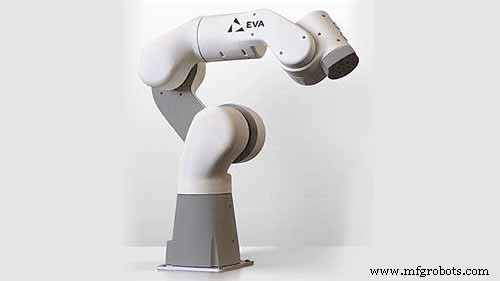
Source:Pinterest
There is a more recent version of industrial robots in use today that is worth mentioning here. Collaborative Robots are industrial robots that can work alongside humans without any need for stringent safety barriers. They have a rounded design and are equipped with special sensors that give them the ability to always know where humans are to give them the space to assist workers.
Pros
- They are able to work side by side with human workers increasing their efficiency
- They can be repurposed easily which means they can be moved to another job quickly.
- They cost much less to build compared to the other types of robots
Cons
- They are very slow because speed has been sacrificed for human safety.
- They have a low payload capacity, again because of safety issues.
Industrial Application
- Assembly of movable parts.
How Do Robotic Arms Work?
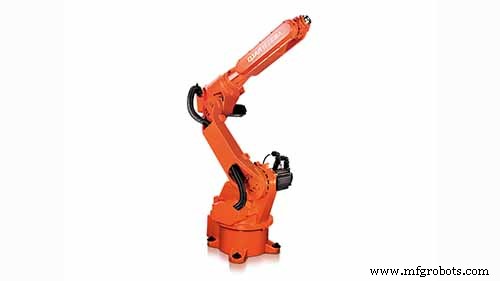
Robotic arms are designed based on the human arm, and they work almost in the same manner. How a robotic arm works depends on the task it has been designed for. In general, however, there is a specific way that all robotic arms function. They all depend on joints for movements and are equipped with other features that make this possible, sensors, for instance.
To get a better view of how they work, we must know the industrial robot parts that make up the robotic arm. They include the following:
Controllers
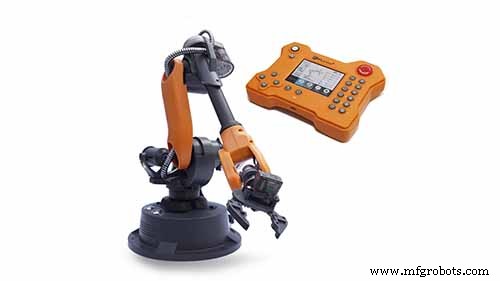
Source:Pinterest
Industrial robot controllers are the brains of the robot. They are the processors that carry the executable program that determines the movements that the robotic arm makes. They can either be automatically programmed or allow for manual operations by a qualified technician. In some places, they take the form of huge computer systems, and at times they are reduced to a simple joystick.
Arms
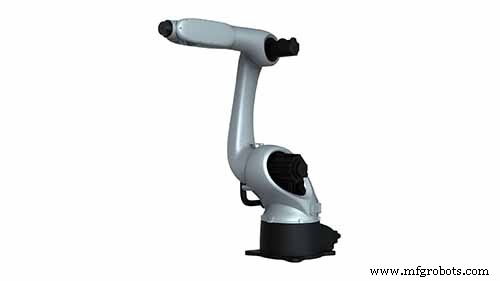
This is the part that does the actual work. It consists of three main parts:the shoulder, the elbow, and the wrist, just like humans. All these three parts are linked to each other through axes and joints controlled by the central processor, the controller. Each part has to move in relation to the other for efficiency to be attained.
End Effector
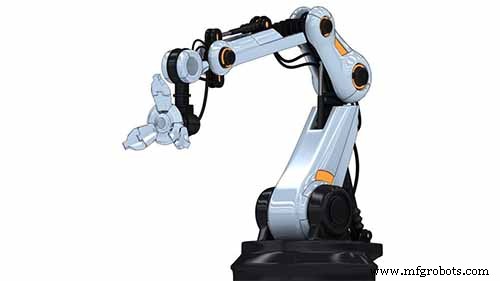
Source:Pinterest
This is the part that performs the functions of the hand. Most times, A robot end effector is made up of two claws that hold objects by closing and opening automatically. Some can spin and make maneuvering movements when holding or moving objects.
Drives
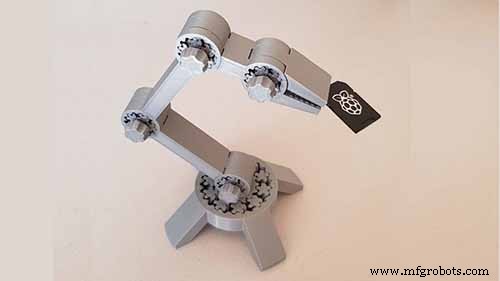
Source:Pinterest
These are the motors between the joints that control the maneuvers and the movements of the robot arms . They usually use belts that are replicas of the ones found in car engines.
Why Do You Need Robotic Arms?

Source:Pinterest
Industrial robotics companies have been on the rise in the last two decades, and as time progresses, so are the technological advancements in the robot world. Soon, we will have robots performing all the work around us. As much as they are causing disruptions as far as human labor is concerned, there is no denying that robots have made life much easier.
The following are some of the advantages of using industrial robotic arms .
Improved Worker Safety
Construction jobs are labor-intensive, and they involve a lot of heavy machinery that can pose a danger to human workers. Being exposed to harmful chemicals can also have a detrimental impact on people’s health. Industrial robotic arms have greatly reduced this risk as they can work in any condition since they are inanimate machines. They can handle repetitive work without losing focus even for a second.
Decreased Costs
Although the initial cost of acquiring a robot can be high, the long term benefits are huge. On top of scrapping the need for salaries, time offs, and other accruing benefits, robots are not prone to errors. The losses that factories have suffered due to the destruction of machines and products out of human negligence are things of the past.
Increased Productivity
What used to take days to achieve can now be attained within hours. The thing with human labor, it is prone to burn out, and rest is necessary. The only way you can keep production running for 24hrs is through shifts. Robots, on the other hand, can run for days without taking a single break. An intelligent assembly work cell can put in work that is equivalent to 4 people working at the same time.
Better Product Quality
Humans cannot replicate the accuracy and precision involved when robots are part of the production process. Robots used in manufacturing are guided by laser-sharp guidance technologies, which means every cut and measurement they make is right on the money. Articulated robots , for example, are the embodiment of accuracy in the robot world. Better accuracy translates to products with higher qualities.
Reliability
Industries that use robots in manufacturing have seen production increase exponentially. As long as they are serviced regularly, they will keep doing consistent work no matter how harsh the conditions may be. The same thing cannot be said of human workers prone to sickness and fatigue, which ultimately affects their output.
What Industries Use Industrial Robots?
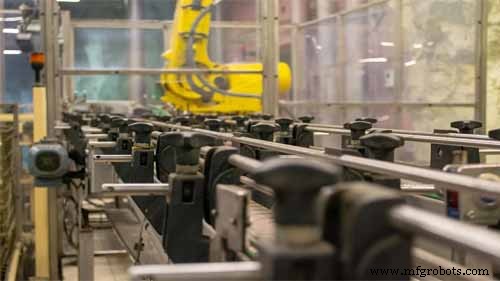
Source:Pixabay
A lot of manufacturers have switched or are in the process of fully automating their production process. The reasons for this are many, but the main one is that robots are reliable, reduce the cost of paying salaries, and save money that can be redirected to other things. The following are some of the industries that utilize robotic arm applications in their manufacturing processes.
Automotive Industry
Robotics in automotive manufacturing were among the very first to be adopted as far as industrial robotics go. As of now, you will not find any car maker that does not employ a car manufacturing robots for over 75% of its production. The automotive industry accounts for about 30% of the total industrial robotic arm installations. The most commonly used robot by car manufacturers is the ABB IRB 6640 that is good for welding car frames into place.
Aerospace industry
Just like the automotive industry, the making of planes requires a lot of robot power. The demand for air travel is increasing the world over, and to meet this demand, there is a need to manufacture more airplanes faster than before. Industrial robots are the answer to this need as they are faster and can be programmed to handle any kind of task. Applications like motor parts painting , sealing, drilling, and welding are some of the things that are handled by automated machines.
Electronics Industry
Electronics are part of our lives, and we cannot do without them. Their manufacture involves a lot of components whose assembly can be easily lost to humans. Industrial robots are now being heavily used in the manufacture of electronics as they are more adept at dealing with tiny and sensitive parts of electric appliances. The use of cleanroom robots, for instance, has greatly improved the quality of electronics as they prevent dust from ever coming into contact with the internal parts during assembly.
Food Industry
Food packaging is now handled exclusively by robots. In some places, it is even part of the requirements to employ the services of robots in a sensitive job that is the packaging and warehousing. The advantages of using robots in food processing is that there is less chance of contamination since robots are precise and fast. Putting food into the right portions and sizes has also become the hallmark of robotic food processing.
Medical and Pharmaceutical Industry
The sorting, bottling, dispensing, and inspection of medications is now a preserve of industrial robots . Robots have now been programmed to measure the exact amount of drugs on the last milligram. Robots in the medical and pharmaceutical industry have made it easier to handle drugs in a better way that avoids excessive wastage and contamination.
Delicate medical devices like surgical tools are now manufactured to the exact sizes as needed using medical robots that are changing the world. When medical tools are compromised, it makes it harder for doctors to treat their patients properly.
How Much Does A Robotic Arm Cost?

Source:Pixabay
Robots used to cost a lot more in the past than they do right now. Mass production has made it possible for the prices to come down a little, but they are still on the higher end of the budget. In the present market, the average i ndustrial robot price is about $25,000, but it can rise to over $400,000 depending on the model and the size.
A robotic arm price also tends to go higher as you add more peripherals and extra features. Application-specific additions, like collision sensors and safety cages, which are a necessity, can double the initial price of the whole machine.
As an interested buyer, you can either go for a brand new robot or a cheap industrial robot arm that has been used before. One advantage of going for a second-hand robot is that you save on the cost, although you will experience some little mishaps along the way.
The Best Programmable Robotic Arms of 2020
As the use of robotic arms across all industries rises, models are being created to handle application-specific tasks for various manufacturers. The following are the best programmable industrial robotic arms of 2020.
DOBOT Magician Educational Programming Robot
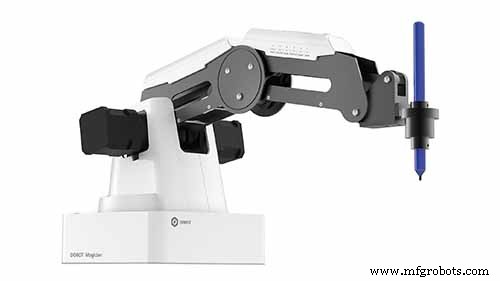
Source:Pinterest
This is a robotic arm that is designed for multi-tasking. It can handle 3D printing, laser engraving, pick and place, drawing, and writing machines. It is equipped with over 20 coding languages, while at the same time, it is simple enough to be used by a beginner level individual.
LewanSoul LeArm 6DOF Full Metal Robotic Arm
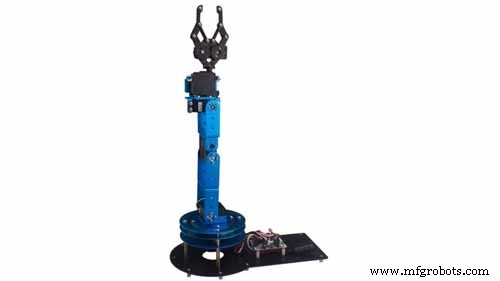
Source:Amazon
This is an arm that is powered by a servo to effect movement flexibly. It has a metal claw that is strong enough to handle heavy loads in any direction. Control of the robot can be done wirelessly and, at the same time, can be controlled through a smartphone.
QJRB800-1 Robot Arm
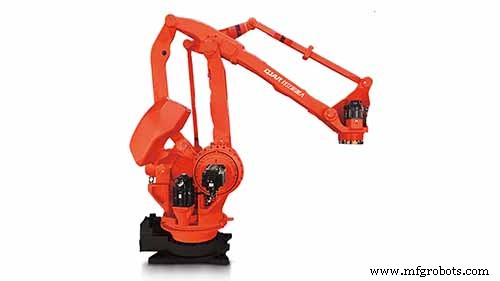
This is a robotic arm created by EVS that has a maximum payload of about 1700 pounds. The whole robot itself with the other parts combined is about 5600 pounds which gives a very stable foundation for any heavy lifting task common in most manufacturing industries.
Owi Robotic Arm Edge
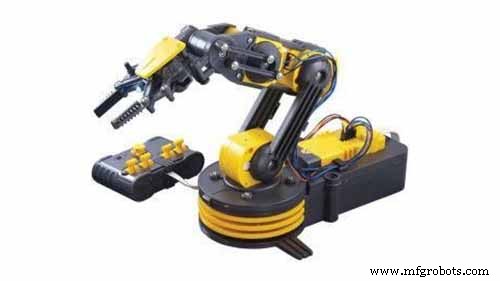
Source:Pinterest
This is a robotic arm equipped with five joints controlled by a wired-5 switch controller that can be operated remotely. D batteries can power the robot at the same time it can be powered by AC power. It has a base rotation of 270° and has an extended life on the gearbox.
How To Choose Industrial Robotic Arms
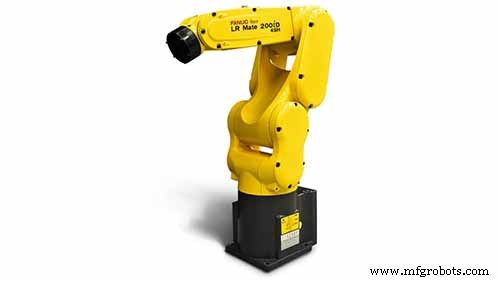
Source:Pinterest
When it comes to choosing a robot arm, there are things you must consider first.
Application
Just because it is a robotic arm does not necessarily mean that you can use it to open your beer, each robotic arm is designed for a specific application. An arm designed for painting cannot be used as a polishing arm or vice-versa. Unless the robotic arm is a multi-purpose one, then you are stuck with one function robotic arm.
Payload
Payload refers to the maximum amount of load that the robotic arm can handle. If you are dealing with a heavier load like industrial packaging, then you will need to go for a big robot arm that can handle heavier loads with a simple pick and place automation .
Degree of Freedom
The movement a robotic arm can maneuver depends on the number of axes. The more the number of axes, the more flexible the arm will be in terms of movement. Bigger robotic arms require more axes as it takes more effort for them to turn.
Speed
If you are dealing with repetitive tasks, then you will be best served with a high-speed robot arm that is as fast as possible, an articulated robot is an example of a fast robot that is suitable for such a task. Some robotic arms come with the options that allow the controller to adjust the speed.
Cost
You can only get what you can afford. If you’re dealing with high volume work like manufacturing, you will need more than one robotic arms, which will cost you a lot. If all you are looking for is a simple contraption for home use, then a simple low-cost robot arm is what you should be going for.
Conclusion
Industrial robot technology is becoming indispensable as time goes by. The manufacturing industry is as good as done with human labor already as we speak. The little left of human labor is reduced to maintenance and the controlling of these robots when the need arises. Someday, in the future, robots will be the standard feature in all industries around the world.
























